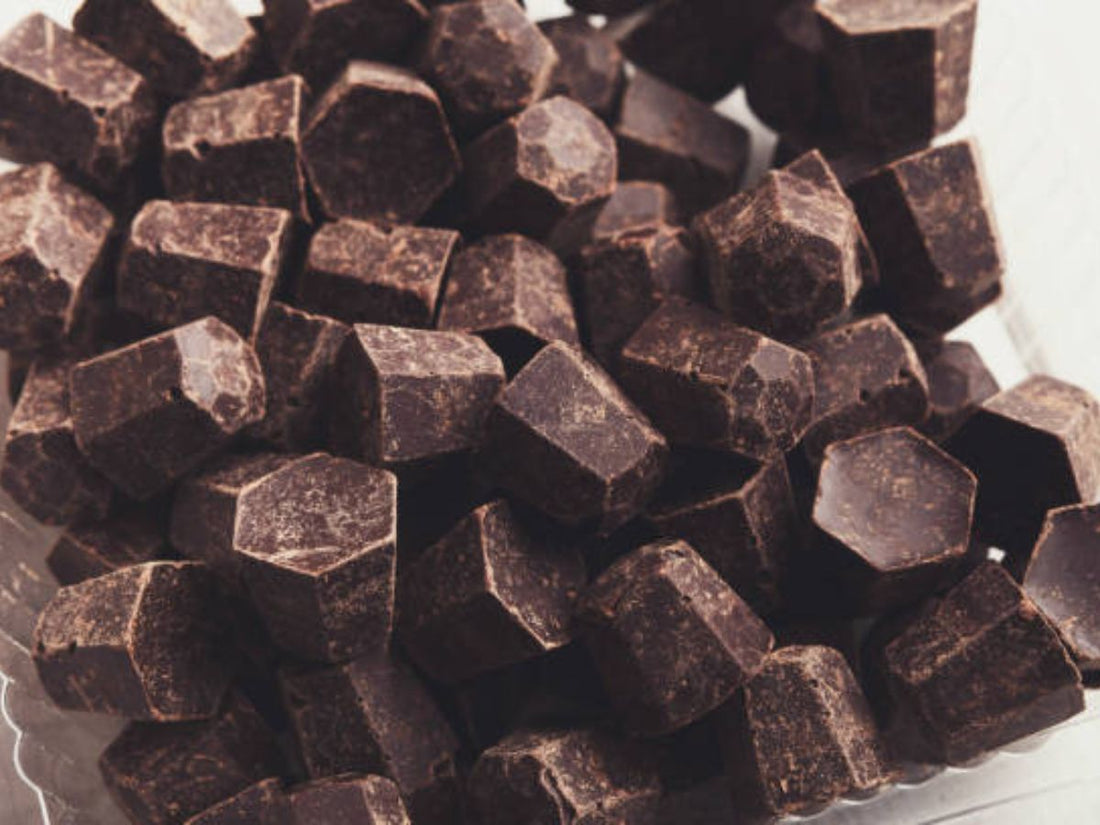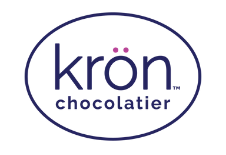
Chocolate comes in more forms than you think. Even for culinary uses, there are so many types to explore. One of them is compound chocolate! It is actually a chocolate-style coating that elevates your favorites like no other thing. Chocolate layer over the pistachio kunafa cake or the yummy chocolate dip cone, this form of chocolate is simply wow. Let’s talk about compound chocolate. Keep reading to know what it made of and more.
What Is Compound Chocolate?
Compound chocolate is a confectionery coating made with cocoa powder and vegetable fats (like palm kernel or coconut) instead of cocoa butter. Unlike real chocolate, it doesn’t need tempering. This makes it easier and cheaper to use for dipping, molding, and decorating.
In simple terms, compound chocolate swaps cocoa butter for vegetable fats and often uses cocoa powder instead of chocolate liquor. That swap changes how it melts, sets, and tastes. The result is a product that’s easy to work with, especially for high-volume or beginner applications.
Did You Know?
Compound chocolate is also called confectionery coating or candy melts.
What is Compound Chocolate Made Of?
Compound chocolate is made from cocoa powder, vegetable fats (such as palm kernel, coconut, or shea), sugar, milk solids, emulsifiers like lecithin, and flavorings such as vanilla. Vegetable fats make it easier to handle, it requires no tempering, and is a stable, cost-effective chocolate alternative.
Is Compound Chocolate Real Chocolate?
Compound chocolate is not considered real chocolate because it replaces cocoa butter with vegetable fats and uses cocoa powder instead of cocoa liquor. U.S. standards of identity for chocolate restrict the fat phase to cocoa butter (and dairy fat, where applicable). If other fats are used, the product can’t be labeled “chocolate”; instead, you’ll see “chocolate-flavored”, “confectionary coating”, or “chocolatey.”
The regulations for other regions vary; the EU allows small percentages of certain vegetable fats in products still labeled chocolate. Because of those fats, it doesn’t need tempering, sets quickly, and costs less.
What are the Perks of Using Compound Chocolate?
Compound chocolate offers several benefits: it doesn’t require tempering. Therefore, it is quite easy to use for beginners and professionals. It’s cost-effective, sets quickly, and performs well in warm environments. Ideal for coating, molding, dipping, and coloring, it provides versatility in baking and confectionery without the complexities of real chocolate.
What are the Disadvantages of Compound Chocolate?
Compound chocolate offers a simpler flavor and softer texture compared to real chocolate. It lacks the rich cocoa complexity and crisp “snap” of couverture. Additionally, in many regions, it cannot be legally labeled as chocolate. For example, you can’t call it chocolate in the US. This may affect product perception, branding, and appeal for premium confectionery.
Why Doesn’t Compound Chocolate Need Tempering?
Compound chocolate doesn’t have cocoa butter. Instead it is made of vegetable oil. You should know that cocoa butter requires precise crystallization to achieve gloss and snap. On the other hand, vegetable fats have a stable melting structure that sets smoothly on their own – no tempering needed!
Compound coatings are truly a star of desserts because of their melt-and-use convenience. But do you know that they come in different forms too.
What are the Types of Compound Chocolate?
Different types of compound chocolate include dark, milk, and white varieties. Dark offers richness, milk adds creaminess, and white is a sweet base for coloring. Other types include flavored versions like strawberry or mango, semi-sweet options, and decorative coatings for creative desserts.
Here is what else you should know about the forms compound chocolate comes in:
➢ Dark Compound Chocolate
This one adds a deep, slightly bitter dark chocolate flavor to desserts. It’s perfect for enrobing bars, cookies, or fruits and offers a stable, cost-effective alternative to real dark couverture.
➢ Milk Compound Chocolate
Milk compound chocolate blends cocoa powder, vegetable fats, and dairy solids for a creamy, sweet taste. It is widely used for coating, molding, and fillings in bakery products.
➢ White Compound Chocolate
White compound chocolate contains sugar, vegetable fats, milk solids, and flavorings, but no cocoa liquor. It provides a sweet, neutral base ideal for tinting with oil-based colors. This is why it is a popular choice for cake pops, decorations, and seasonal dessert themes.
➢ Flavored Compounds
This type of chocolate includes fruity options like strawberry, mango, or tropical blends, as well as mint or caramel notes. These coatings combine color and taste in one product, making them convenient for themed treats, novelty items, and fun bakery creations.
➢ Semi-Sweet Compounds
Another versatile variation, semi-sweet compound chocolate balances the rich flavor of dark with the creaminess of milk. It has moderate sweetness, making it versatile for coatings, drizzles, and inclusions in baked goods where neither overly sweet nor bitter notes are desired.
➢ Decorative Compounds
These chocolates are pre-colored or patterned coatings designed for convenience. Available in seasonal hues or custom designs, they are ideal for drizzling, writing, or molding. Bakeries often use them for festive cupcakes, cake pops, or holiday confectionery.
➢ Chips / Drops
Compound chocolate chips or drops are small, uniform pieces perfect for cookies, muffins, brownies, or quick melting. They hold their shape during baking yet melt smoothly for coatings. Therefore, they are a great choice for both home bakers and large-scale producers.
➢ Blocks / Slabs
These are bulk formats used in professional bakeries and factories. They are melted down for enrobing, molding, or grating onto desserts. Slabs allow cost efficiency and flexibility in customizing recipes or large-batch production.
➢ Candy Melts
Wafers, often known as candy melts, are thin discs that melt quickly and evenly. They come in multiple colors and flavors. Moreover, they are a go-to for cake pops, dipping strawberries, drizzling over cookies, and festive decorative work.
➢ Pre-Molded Shapes
These compound chocolate shapes are ready-to-use figures, such as hearts, stars, or holiday icons. They save time in decorating, can be used as stand-alone treats, or added to desserts. So, they are considered especially useful for seasonal or themed creations.
Understanding the different types of chocolate helps bakers and confectioners make better decisions. Compound chocolate offers convenience and versatility, while real chocolate delivers premium flavor—selecting wisely ensures both creativity and quality in every recipe.
Compound vs. Couverture Chocolate: Which is Better?
Both chocolate types in question are used in confections but they are not same. They have different ingredients and different ease of use. Compound chocolate uses vegetable fats, more affordable, and ideal for coating, dipping, or coloring without tempering. Couverture chocolate, however, contains high cocoa butter, requires tempering but delivers superior flavor, texture, and glossy snap. Which is better depends on your needs. For example, compound suits convenience and large-scale production. Meanwhile, couverture is best for premium desserts where taste and quality shine.
|
Feature |
Compound Chocolate |
Couverture / “Real” Chocolate |
|
Fat source |
Vegetable fats (palm kernel, coconut, shea, etc.) |
Cocoa butter |
|
Tempering needed? |
No… just melt, coat, set |
Yes, precise temper curve |
|
Mouthfeel & flavor |
Simpler flavor, softer “snap” |
Rich cocoa flavor, crisp “snap” |
|
Cost & handling |
Lower cost, forgiving in warm rooms |
Higher cost, sensitive to heat/humidity |
|
Best for |
Dipping, drizzling, kid’s classes, colored coatings, bakery finishes |
Premium enrobing, bonbons, bars, showpieces |
Conclusion
Compound chocolate is a versatile and practical alternative to couverture. After all, you just need to melt it and use it for your dessert. Yes, real chocolate has richer flavors and a more satisfying snap. But when it comes to convenience and creativity, nothing can top compound chocolate. It’s quite popular among bakeries, confectioners, and home bakers.
Understanding its types, forms, benefits, and limitations helps you choose the right chocolate for the right purpose. Ultimately, whether you select compound or couverture depends on your priorities. Choose what’s best for you: efficiency and affordability or premium taste and texture.








